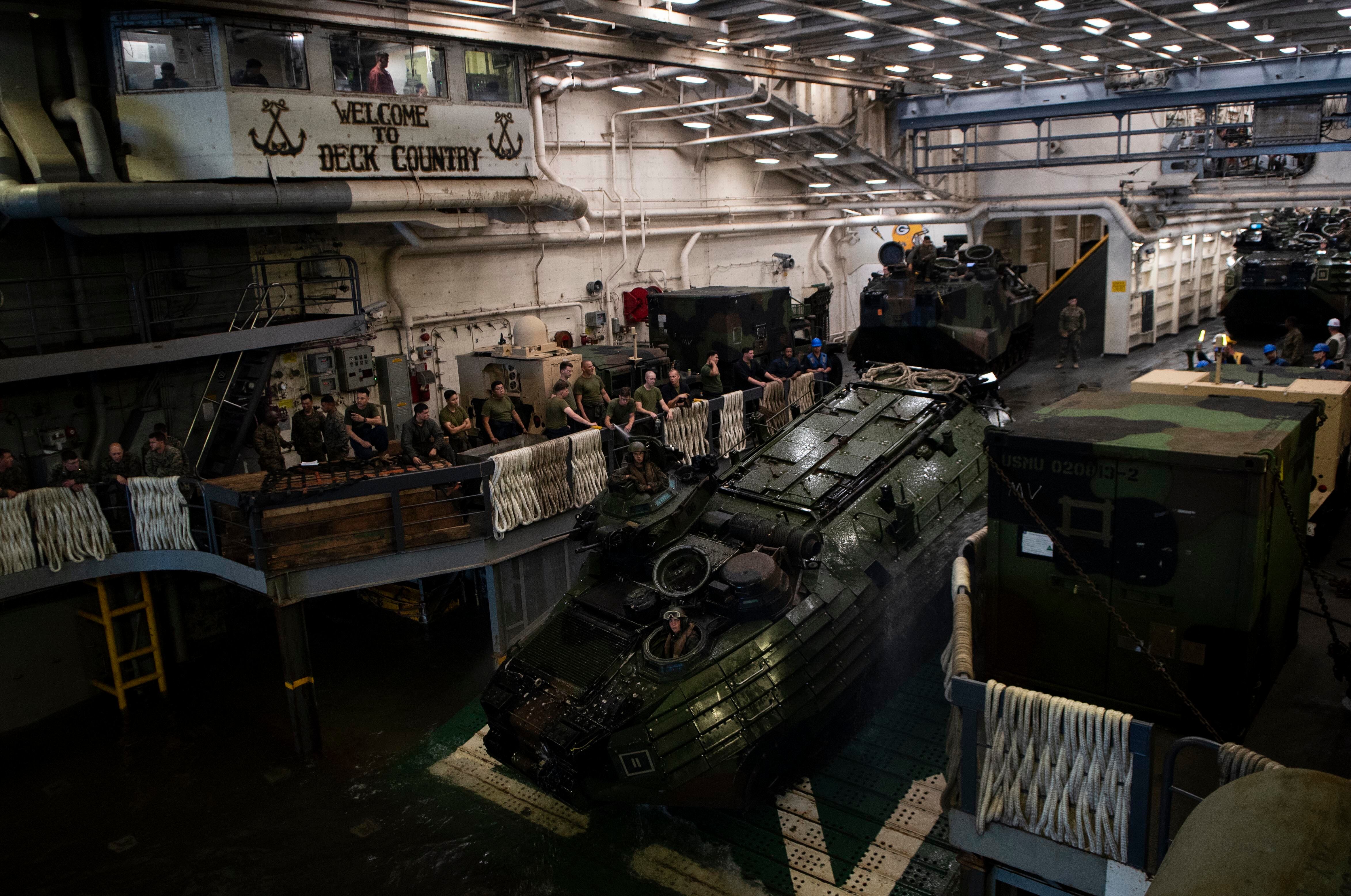WASHINGTON — The U.S. Navy’s plan to decommission three amphibious warships ahead of schedule has drawn ire from some legislators, who last year put into law a requirement for the service to maintain a fleet of at least 31 ships for the Marine Corps to use.
The Navy in its fiscal 2024 budget request asked to decommission three Whidbey Island-class amphibious dock landing ships — the Germantown, Gunston Hall and Tortuga — which it tried to decommission last year and Congress voted to save.
Vice Adm. Scott Conn, the deputy chief of naval operations for warfighting requirements and capabilities, explained during a Tuesday hearing before the Senate Armed Services Committee’s sea power panel that these ships are not viable options for overseas operations given their poor condition. The vessels have not reached the end of their planned 40-year life span.
Conn said the ships’ original service life was meant to be 35 years, but in the 1990s the Navy changed that to 40 based on the assumptions the ships would operate in six-month deployments and be properly maintained along the way.
Throughout the wars in Iraq and Afghanistan, “we operated those ships much longer than six-month deployments,” Conn said. “We know we didn’t put the resources [toward] those ships to be able to sustain them. So now we’re in a position where we have some hard choices to make.”

As the Navy watches their performance in ongoing maintenance availabilities, “we don’t have the confidence, as we’re seeing growth work and new work, that those ships will get out of the maintenance phase, be able to get through a work-up cycle … which is a year long, and then go on deployment.”
Why keep them if “we can’t get them away from the pier,” Conn wondered.
It would cost about $3 billion to keep the Whidbey Island amphibious ships and cruisers the Navy wants to decommission, but Conn argues that money would be better spent on other ships. Additionally, decommissioning the ships rather than continuing their unsuccessful maintenance availabilities would free up sailors for other ship assignments at sea and would free up repair yards to work on ships that are more badly needed by the fleet.
Sen. Dan Sullivan, R-Alaska, who serves in the Marine Corps Reserve, told Conn the Navy’s plan to decommission these ships brings the fleet lower than the now-statutory requirement for 31 ships.
“This is not a suggestion, it’s a law,” he said. “You have a law, we passed it … and the Navy comes out and says: ‘Eh, we’ll just blow off those silly U.S. senators.’ ”
Conn told him that “having 31 ships, of which three of them may be tied to a pier for the next five years, is not really 31.”
Megan Eckstein is the naval warfare reporter at Defense News. She has covered military news since 2009, with a focus on U.S. Navy and Marine Corps operations, acquisition programs and budgets. She has reported from four geographic fleets and is happiest when she’s filing stories from a ship. Megan is a University of Maryland alumna.




